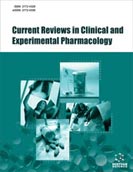Abstract
Background: Berberine (BBR), an isoquinoline alkaloid, acts as a multipotent active pharmaceutical ingredient to counteract several types of dementia based on its numerous pharmacological actions including antioxidant, anti-inflammatory, cholesterol-lowering effect, and inhibition of Aβ production and AChE. However, BBR suffers from poor absorption, bioavailability and brain drug uptake. The present study is directed for the formulation and characterization of Chitosan BBR-Nanoparticles (BBR-NPs) as well as the estimation of its neuroprotective effects against scopolamine induced cognitive impairments.
Methods: BBR-NPs were formulated using the ionic gelation method, and tripolyphosphate was chosen as a crosslinker. Nanoparticles size, zeta potential, encapsulation efficiency and releasing profile were estimated. To investigate the neuroprotective effects, adult fifty-six Wistar male rats were randomly distributed into three control groups, received saline, polyethylene glycol or Chitosan- NPs, respectively; induced group, received scopolamine (2 mg/ kg, i.p.) and three treated groups were orally administrated BBR (50 mg/ kg), BBR- NP (7 mg/ kg) and donepezil (2.25 mg/ kg, as positive control) followed by scopolamine injection after 40 min, daily for 4 weeks. Morris water maze test, oxidative stress parameters, cholinergic and amyloid-β processing intermediates, as well as neuroplasticity markers and histopathological examination were assessed.
Results: Our results showed that BBR- NPs were better than BBR and donepezil as BBR- NPs were powerful inhibitory ligands towards AChE and Aβ42 formation and significantly down-regulated Tau, iNOS and BACE gene expression in rats’ hippocampus. BBR-NPs administration, at 1/6 of BBR therapeutic recommended dose, significantly improved learning and memory function. This could be accredited to the diminution of oxidative stress and amyloid-β toxicity in addition to the improvement of the neuroplasticity markers.
Conclusion: The enhancing effect of BBR- NPs could be related to the enhancing of its bioavailability, absorption and brain drug uptake, which need more investigation in future work.
Keywords: Scopolamine, acetylcholinesterase, berberine, oxidative stress, amyloid-β, morris water maze test, neuroplasticity, chitosan.
[http://dx.doi.org/10.1016/j.exger.2017.02.004] [PMID: 28223223]
[http://dx.doi.org/10.1007/s13346-019-00626-1] [PMID: 30868509]
[http://dx.doi.org/10.2174/1568026615666150827095433] [PMID: 26311424]
[http://dx.doi.org/10.2147/NDT.S114846] [PMID: 27757035]
[http://dx.doi.org/10.3390/molecules16086732] [PMID: 21829148]
[http://dx.doi.org/10.1371/journal.pone.0093974] [PMID: 24713870]
[http://dx.doi.org/10.1016/j.lfs.2005.02.033] [PMID: 15996686]
[http://dx.doi.org/10.1371/journal.pone.0136509] [PMID: 26325402]
[http://dx.doi.org/10.1371/journal.pone.0077969] [PMID: 24205048]
[PMID: 28656087]
[http://dx.doi.org/10.2147/IJN.S22683] [PMID: 21931477]
[http://dx.doi.org/10.12980/APJTB.4.2014C980] [PMID: 25183064]
[http://dx.doi.org/10.1016/j.nano.2015.12.108] [PMID: 27771431]
[http://dx.doi.org/10.2147/IJN.S51262] [PMID: 24353417]
[http://dx.doi.org/10.1186/s12951-018-0402-x] [PMID: 30290822]
[http://dx.doi.org/10.3390/md12115677] [PMID: 25421323]
[PMID: 29872621]
[http://dx.doi.org/10.1016/j.ijpharm.2019.02.012] [PMID: 30772458]
[http://dx.doi.org/10.1081/DDC-100105182] [PMID: 11548864]
[http://dx.doi.org/10.1016/S0378-5173(02)00486-6] [PMID: 12433442]
[PMID: 25594571]
[http://dx.doi.org/10.1186/s13104-018-3162-7] [PMID: 29351805]
[http://dx.doi.org/10.1080/02652048.2017.1375039] [PMID: 28862080]
[http://dx.doi.org/10.1155/2014/869269] [PMID: 25136634]
[http://dx.doi.org/10.1208/s12249-009-9279-1] [PMID: 19609682]
[http://dx.doi.org/10.1016/j.ejps.2012.04.013] [PMID: 22561106]
[http://dx.doi.org/10.1016/j.nano.2009.04.001] [PMID: 19446656]
[http://dx.doi.org/10.1016/j.ejpb.2008.07.005]
[http://dx.doi.org/10.1016/j.ijpharm.2013.02.015] [PMID: 23434543]
[http://dx.doi.org/10.4196/kjpp.2012.16.2.79] [PMID: 22563252]
[http://dx.doi.org/10.1155/2015/361847] [PMID: 26576191]
[http://dx.doi.org/10.1007/s00213-017-4690-x] [PMID: 28733814]
[http://dx.doi.org/10.1016/j.fct.2017.11.025] [PMID: 29170048]
[http://dx.doi.org/10.1016/S0028-3908(01)00096-X] [PMID: 11640934]
[http://dx.doi.org/10.1016/0003-9861(59)90259-0]
[http://dx.doi.org/10.1016/0003-9861(59)90090-6] [PMID: 13650640]
[PMID: 4436300]
[PMID: 6066618]
[PMID: 14907713]
[http://dx.doi.org/10.1016/0006-2952(61)90145-9] [PMID: 13726518]
[http://dx.doi.org/10.1016/j.fsi.2019.05.017] [PMID: 31096061]
[http://dx.doi.org/10.3109/10611869308998759] [PMID: 8069547]
[http://dx.doi.org/10.1016/j.ijpharm.2009.04.027] [PMID: 19409469]
[http://dx.doi.org/10.1016/j.ijpharm.2017.05.039] [PMID: 28549973]
[http://dx.doi.org/10.1021/acsomega.8b00764] [PMID: 30087934]
[http://dx.doi.org/10.1016/j.ijbiomac.2019.02.005] [PMID: 30726749]
[http://dx.doi.org/10.2174/1567201815666181011121750] [PMID: 30317997]
[http://dx.doi.org/10.3390/pharmaceutics11010026] [PMID: 30634665]
[http://dx.doi.org/10.1016/j.neuropharm.2016.04.027] [PMID: 27108935]
[http://dx.doi.org/10.1038/srep09748] [PMID: 26130273]
[http://dx.doi.org/10.3892/mmr.2018.8401] [PMID: 29328430]
[http://dx.doi.org/10.1186/1471-2202-7-78] [PMID: 17137520]
[http://dx.doi.org/10.1371/journal.pone.0172429] [PMID: 28505155]
[http://dx.doi.org/10.1016/j.neuint.2016.06.010] [PMID: 27346436]
[http://dx.doi.org/10.1007/s00213-014-3728-6] [PMID: 25189792]
[http://dx.doi.org/10.1016/j.pbb.2003.09.014] [PMID: 14643852]
[http://dx.doi.org/10.1248/bpb.32.1433] [PMID: 19652386]
[http://dx.doi.org/10.1007/s11064-015-1783-y] [PMID: 26646000]
[http://dx.doi.org/10.3389/fncel.2014.00022] [PMID: 24574966]
[PMID: 26651592]
[http://dx.doi.org/10.1006/abbi.1999.1404] [PMID: 10510282]
[http://dx.doi.org/10.1523/JNEUROSCI.19-01-00147.1999] [PMID: 9870946]
[http://dx.doi.org/10.3390/ijms15034671] [PMID: 24646911]
[http://dx.doi.org/10.4103/0253-7613.66841] [PMID: 20871769]
[http://dx.doi.org/10.1100/2012/823201] [PMID: 22262957]
[http://dx.doi.org/10.1186/1472-6882-13-218] [PMID: 24007270]
[http://dx.doi.org/10.1111/j.1471-4159.2004.02680.x] [PMID: 15341532]
[http://dx.doi.org/10.3389/fnmol.2017.00056] [PMID: 28367112]
[http://dx.doi.org/10.1186/1471-2202-12-125] [PMID: 22152059]
[http://dx.doi.org/10.1016/j.phrs.2010.12.004]
[http://dx.doi.org/10.1016/S0896-6273(03)00840-7] [PMID: 14715130]
[http://dx.doi.org/10.1016/j.neuint.2006.03.007] [PMID: 16675062]
[http://dx.doi.org/10.1038/nm1135] [PMID: 15531889]
[http://dx.doi.org/10.3233/JAD-2011-101779] [PMID: 21297267]
[http://dx.doi.org/10.1101/lm.51202] [PMID: 12359832]
[http://dx.doi.org/10.1093/gerona/glq094] [PMID: 20530246]
[http://dx.doi.org/10.1186/alzrt179] [PMID: 23673233]































